TL;DR Can the user token contained in a WindowsIdentity's Token property (say, someIdentity.Token) be spoofed such that:
var validated = new WindowsIdentity(someIdentity.Token);
...will return an instance that claims to represent a user that has not, in fact, been authenticated, and yet has IsAuthenticated set true, valid .Name and .User properties, etc.?
Below I put a few boundaries on this; it's presumably impossible to completely spoof-proof.
The full story:
In this answer, Damien_The_Unbeliever cleverly demonstrated that some code of mine could be tricked into believing it had a valid authenticated user in a WindowsIdentity instance when it didn't. Long story short, my code was assuming that if Thread.CurrentPrincipal.Identity was an instance of WindowsIdentity and IsAuthorized was true, that it represented an authenticated user and I could rely on the SID in .User:
WindowsIdentity identity = Thread.CurrentPrincipal == null
? null
: Thread.CurrentPrincipal.Identity as WindowsIdentity;
if (identity != null && identity.IsAuthenticated && !identity.IsAnonymous) {
// ...use and trust the SID in identity.User, the
// username in identity.Name, etc....
}
(There's a reason this code is using the thread rather than WindowsIdentity.GetCurrent().)
His code to trick that (slightly modified):
var ident = WindowsIdentity.GetCurrent();
Thread.CurrentPrincipal = new WindowsPrincipal(ident);
var fakeSid = new SecurityIdentifier("S-1-3-0"/* E.g., some SID you want to trick me into believing is the real user */);
typeof(WindowsIdentity).GetField("m_user", BindingFlags.Instance | BindingFlags.NonPublic)
.SetValue(ident, fakeSid);
And sure enough, if you do that then call my code above, my code gets fooled. Kudos Damien.
So in true arms race fashion, here's my revised code that catches the spoof and denies it:
WindowsIdentity identity = Thread.CurrentPrincipal == null
? null
: Thread.CurrentPrincipal.Identity as WindowsIdentity;
if (identity != null && identity.IsAuthenticated && !identity.IsAnonymous) {
var validated = new WindowsIdentity(identity.Token);
if (!validated.User.Equals(identity.User) || !validated.IsAuthenticated || validated.IsAnonymous) {
// Something fishy is going on, don't trust it
} else {
// Good! Use the validated one
identity = validated;
// ...use and trust the SID in identity.User, the
// username in identity.Name, etc....
}
}
As you can see, that takes the Token from the provided identity and creates a new WindowsIdentity instance using that token. If the SIDs of the identities match, we continue, trusting the validated one. (The documentation for WindowsIdentity(IntPtr token) says that the initial value of IsAuthenticated will be false, but that's simply wrong in my tests assuming I've created it with a valid user token.)
The only way I can see that that could be tricked would be with a spoofed user token that nevertheless passes the validations Windows does with it. That seems unlikely to me. But then, this is an area of ignorance for me.
Boundaries:
I should note that I'm just shooting for a reasonable degree of single sign-on security here, doing my due dilience. If a malicious app has successfully started intercepting system calls / compromised Windows itself, well, there's just not a lot I'm going to be able to do about that. As Damien pointed out in comments on that other question, he could probably build a host container that completely ignored strong naming (and thus could give me a completely fake WindowsIdentity type). Fair enough. Perfection kills. I just don't want to leave doors open like the one Damien kindly demonstrated. If I released a system and it were hacked in the field that easily, I'd be pretty darned embarrassed about it. :-)

